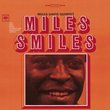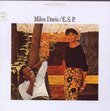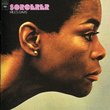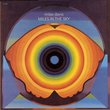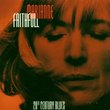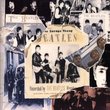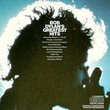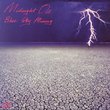| All Artists: Miles Davis Title: Filles De Kilimanjaro (Dlx) Members Wishing: 1 Total Copies: 0 Label: Sbme Special Mkts. Release Date: 2/1/2008 Album Type: Original recording remastered, Extra tracks Genres: Jazz, Pop Styles: Jazz Fusion, Modern Postbebop, Bebop Number of Discs: 1 SwapaCD Credits: 1 UPC: 886972379623 |
Search - Miles Davis :: Filles De Kilimanjaro (Dlx)
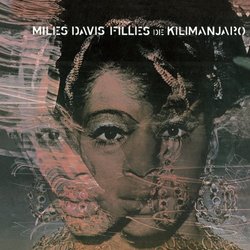 | Miles Davis Filles De Kilimanjaro (Dlx) Genres: Jazz, Pop
|
Larger Image |
CD DetailsSimilar CDs
Similarly Requested CDs
|
CD ReviewsFilles De Kilimanjaro-The First Jazz-Funk Fusion Album? Andre S. Grindle | Brewer Maine | 05/06/2008 (5 out of 5 stars) "While I am sure Larry Coryell deserves a lot of credit for his innovations in fusion the concept of jazz-funk fusion probably starts with this album. Basically what Miles and his quintet are dealing with here is transitions of both a musical and personal nature.Herbie Hancock and Chick Corea alternate (on various cuts) on electric piano and the same goes for Ron Carter and Dave Holland.I've heard it said that had to do with the fact that while he had nothing against fusion jazz,Ron Carter wasn't as comfortable playing electric bass as he was an acoustic one. But no matter who is playing what this album is,as they might've said in the late 60's,"now". For the past several album Miles and his Quintet created a unique type of jazz that blended be-bop with avante garde techniques and on this album,Miles's strong influence from soul and R&B (from listening to Sly Stone and James Brown and perhaps his wife Betty Mabry) has had an impact on the music as well. For one Tony Williams,always a rock and R&B fan himself was still improvising on drums as only he could but his general rhythm has a funkier,more syncopated tone here...at times. That being said,perhaps that colliding with the Fender Rhodes soloing "Frelon Brun" is definately in on the new jazz-funk style completely.Even though they wiggle and wobble between what Herbie Hancock calls "jazz and rock n roll backbeats" jumping in and around eachother "Petits Machins" and the title song both illustrate something of the same feeling."Toute De Suite" and the alternate take of it presented here are as we see now yet another innovation:the beginnings of what we might call "acid jazz" now;midtempo funky rhythms,LOTS of fender rhodes solos and a bluesy jazz feel-amazing tune either way you cut it. In dedication to his wife Davis also included "Mademoiselle Mabry",a elongated blues showcasing,as the rest of these songs do a very pretty melody. One thing Miles managed to do on this album was maintain his melodic jazz flair and also cloth it in a brand new setting. This is definately one of those albums where Miles begins to lean heavily into the style that would soon become known as fusion.Not too long after this Miles would release his landmark In a Silent Way and it was off to the races for him;his songs developed more concise grooves and became even longer in lengh.Nontheless this will always hold a very special place in Miles' vast musical legacy." A transitional record, entertaining, but the quintet was dri Christopher Culver | 11/28/2008 (3 out of 5 stars) ""Filles de Kilimanjaro" is very much a transitional release by Miles Davis, standing between 1968's Nefertiti, the last word in superbly refined post-bop, and 1969's In a Silent Way, the first coherent fusion achievement. His lineup changed in the course of recording. The first session had his traditional quintet companions Wayne Shorter on saxophone, Herbie Hancock on piano, Ron Carter on bass, and Tony Williams on drums. Oddly, this was the mainly electric attempt, as when Chick Corea came in on piano and Dave Holland on bass in the second recording, Davis had gone back to an all-acoustic lineup.
These are all Miles Davis compositions, as opposed to the Shorter-dominated songwriting on NEFERTITI. Davis was beginning an interest in longer timespans; three of the tracks here clock in at 14, 12 and 16 and half minutes respectively. Nonetheless, things do tend to meander a bit, and I sense a constant uncertainly in the playing on most of the tracks. Ron Carter's bass on "Tout de suite" establishes the sort of mood found (with a very different lineup) on "In a Silent Way", but after a few minutes it seems like Davis and Shorter are no longer confident. Similar moments can be found in most of the remaining tracks. Though named for his future wife Betty Davis, who was to influence his fusion direction and who put out some sex-drenched funk of her own, "Mademoiselle Mabry" is perhaps the most securely post-bop slice on the record, and perhaps the most successful. This is very much a minor release. If embarking on a Miles Davis collection, get NEFERTITI and IN A SILENT WAY first." |

 Track Listings (6) - Disc #1
Track Listings (6) - Disc #1